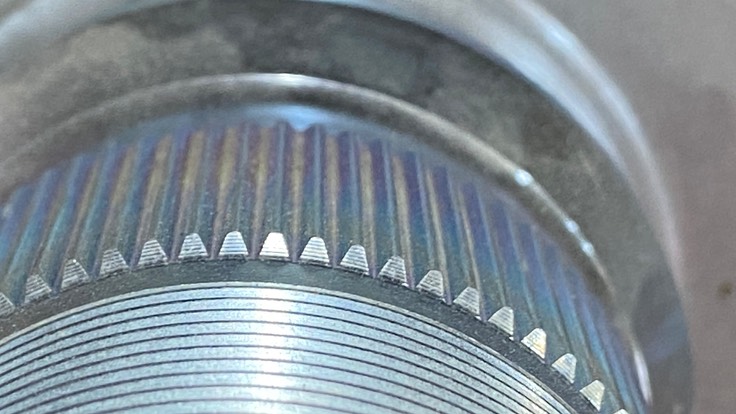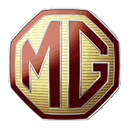
The tops of the individual splines are wide, with a nice radius at the top of the crest. (I have seen some very old hubs where the tops of the splines were flat rather than rounded, though not for many years. If you come across such a spline, its probably fine.) All hubs of modern manufacture will be rounded on top and look like this.
Wire wheels are located on the hub by the inner cone, that tapered part behind the splines near the top of the picture, and the outer cone, which is integrated into the knock-off, aka spinner, not part of the hub at all. All of the force required to drive the wheel, or stop the car, is carried by the splines via the flanks or sides. To repeat myself, the splines don’t locate, they transmit power. Even the little size 42 splines on MGs is capable of carrying well over 200HP. The same hub drove AC Cobras.
For protection there should be a layer of grease packed in between the wheel splines and the hub splines. Regular wire wheel maintenance involves cleaning off the old grease and wiping on fresh grease. Ideally, the wheel splines and the hub splines *never actually touch* and are protected by this microscopic layer of lubrication. Over time, the grease and its additives will break down, dry out, or become contaminated with water or even rust. Once the grease is no longer able to do its job, the splines start to beat directly against one another like long skinny hammers. Every time the vehicle speeds up or slows down, the splines whack back and forth, each time eroding a small tiny bit of metal from the flanks where they make contact. This metal just makes things worse. Eventually the gap between the splines gets larger and larger, so that the hammers get an even longer swing, speeding up the process. At some point, the splines get so narrow that they can no longer stand up to the incoming forces and they simply fail. The knife-edge remaining folds over or shears off and the wheel can now spin freely on the hub. Once this happens, the spinning wheel can even unscrew the knock-off from the hub allowing the wheel to come off.
I actually had this happen to me when I was but a pup in my first beater MGB-GT. Hitting the brakes on a cloverleaf off-ramp, I heard a buzzing shriek and saw a chrome something go flying off into the So-Cal ice plant. Luckily it was an outside wheel on a turn, so it couldn’t actually come off the hub. I was able to park it on the shoulder, wander around in the filthy ground cover until I found the knock-off, swap out for my spare and then limp home to figure out how to solve the problem.
There are more than a few stories of people seeing one of their wheels pass them on the highway, rolling along merrily on the remaining three until physics takes over…
All of this can be avoided with a little bit of time and little blob of grease.
